482 items found
Page 1 of 5
-

The Dance, by Henri Matisse, Jan – March 1939 / No. 4.
£1,200The Dance, by Henri Matisse, Jan – March 1939 / No. 4.
The Verve Review was a purposefully luxurious. It ran from 1937 to 1960, but with only 38 editions available, due to the high degree of design and editorial work dedicated to each issue. Each edition contained unique lithographic prints, commissioned by the editor, and each cover a double-page lithograph elaborated by one of the artists contained within. It was the brainchild of its editor Stratis Eleftheriades, a Greek National who moved to Paris in the early thirties to take part in the growing Modernist movement, writing under the name of Teriade.£1,200 -
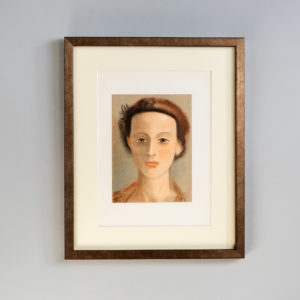
Portrait by Andre Derain, Verve Vol 2 / No. 5-6.
£800Portrait by Andre Derain, Verve Vol 2 / No. 5-6.
The Verve Review was a purposefully luxurious. It ran from 1937 to 1960, but with only 38 editions available, due to the high degree of design and editorial work dedicated to each issue. Each edition contained unique lithographic prints, commissioned by the editor, and each cover a double-page lithograph elaborated by one of the artists contained within. It was the brainchild of its editor Stratis Eleftheriades, a Greek National who moved to Paris in the early thirties to take part in the growing Modernist movement, writing under the name of Teriade.£800 -
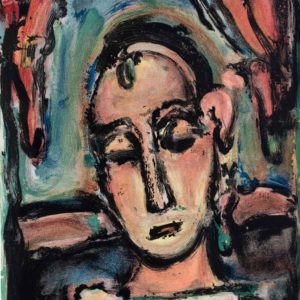
Head of a Girl by George Rouault, Verve Vol 2 / No. 5-6.
£800Head of a Girl by George Rouault, Verve Vol 2 / No. 5-6.
The Verve Review was a purposefully luxurious. It ran from 1937 to 1960, but with only 38 editions available, due to the high degree of design and editorial work dedicated to each issue. Each edition contained unique lithographic prints, commissioned by the editor, and each cover a double-page lithograph elaborated by one of the artists contained within. It was the brainchild of its editor Stratis Eleftheriades, a Greek National who moved to Paris in the early thirties to take part in the growing Modernist movement, writing under the name of Teriade.£800 -
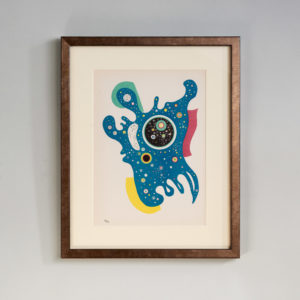
Stars by Wassily Kandinsky, Verve Vol. 1 / No. 2.
£800Stars by Wassily Kandinsky, Verve Vol. 1 / No. 2.
The Verve Review was a purposefully luxurious. It ran from 1937 to 1960, but with only 38 editions available, due to the high degree of design and editorial work dedicated to each issue. Each edition contained unique lithographic prints, commissioned by the editor, and each cover a double-page lithograph elaborated by one of the artists contained within. It was the brainchild of its editor Stratis Eleftheriades, a Greek National who moved to Paris in the early thirties to take part in the growing Modernist movement, writing under the name of Teriade.£800 -
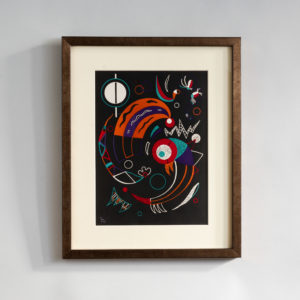
Comets by Wassily Kandinsky, Verve Vol. 1 / No. 2.
£800Comets by Wassily Kandinsky, Verve Vol. 1 / No. 2.
The Verve Review was a purposefully luxurious. It ran from 1937 to 1960, but with only 38 editions available, due to the high degree of design and editorial work dedicated to each issue. Each edition contained unique lithographic prints, commissioned by the editor, and each cover a double-page lithograph elaborated by one of the artists contained within. It was the brainchild of its editor Stratis Eleftheriades, a Greek National who moved to Paris in the early thirties to take part in the growing Modernist movement, writing under the name of Teriade.£800 -
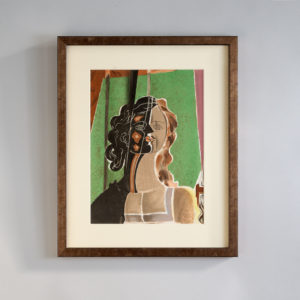
Figure by Georges Braque, Verve Vol 2 / No. 5-6.
£800Figure by Georges Braque, Verve Vol 2 / No. 5-6.
The Verve Review was a purposefully luxurious. It ran from 1937 to 1960, but with only 38 editions available, due to the high degree of design and editorial work dedicated to each issue. Each edition contained unique lithographic prints, commissioned by the editor, and each cover a double-page lithograph elaborated by one of the artists contained within. It was the brainchild of its editor Stratis Eleftheriades, a Greek National who moved to Paris in the early thirties to take part in the growing Modernist movement, writing under the name of Teriade.£800 -
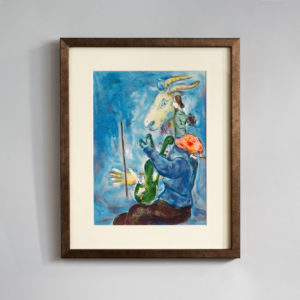
Printemps by Marc Chagall, Verve Vol. 1 / No. 3.
£800Printemps by Marc Chagall, Verve Vol. 1 / No. 3.
The Verve Review was a purposefully luxurious. It ran from 1937 to 1960, but with only 38 editions available, due to the high degree of design and editorial work dedicated to each issue. Each edition contained unique lithographic prints, commissioned by the editor, and each cover a double-page lithograph elaborated by one of the artists contained within. It was the brainchild of its editor Stratis Eleftheriades, a Greek National who moved to Paris in the early thirties to take part in the growing Modernist movement, writing under the name of Teriade.£800 -
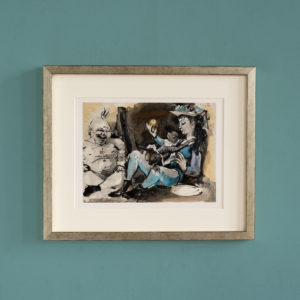
Picasso and the Human Comedy, Verve, Vol. VIII, No 29/30, 1954
£795 eachPicasso and the Human Comedy, Verve, Vol. VIII, No 29/30, 1954
Original lithograph print from Verve Vol. VIII, No 29/30 printed by the Master Printers Mourlot Frères in 1954. Framed in champagne gold with a cream mount.£795 each -
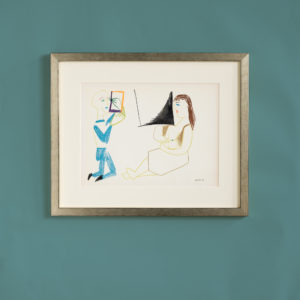
Picasso and the Human Comedy, Verve, Vol. VIII, No 29/30, 1954
£795 eachPicasso and the Human Comedy, Verve, Vol. VIII, No 29/30, 1954
Original lithograph print from Verve Vol. VIII, No 29/30 printed by the Master Printers Mourlot Frères in 1954. Framed in champagne gold with a cream mount.£795 each -
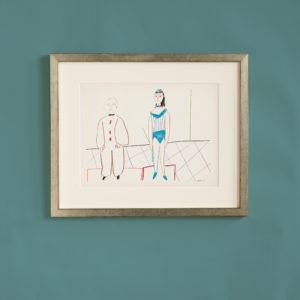
Picasso and the Human Comedy, Verve, Vol. VIII, No 29/30, 1954
£795 eachPicasso and the Human Comedy, Verve, Vol. VIII, No 29/30, 1954
Original lithograph print from Verve Vol. VIII, No 29/30 printed by the Master Printers Mourlot Frères in 1954. Framed in champagne gold with a cream mount.£795 each -
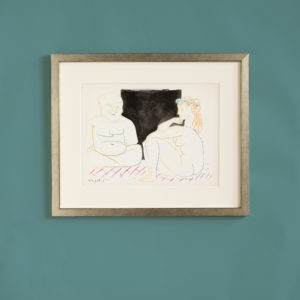
Picasso and the Human Comedy, Verve, Vol. VIII, No 29/30, 1954
£795 eachPicasso and the Human Comedy, Verve, Vol. VIII, No 29/30, 1954
Original lithograph print from Verve Vol. VIII, No 29/30 printed by the Master Printers Mourlot Frères in 1954. Framed in champagne gold with a cream mount.£795 each -
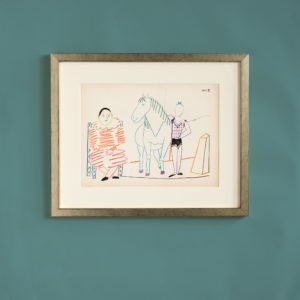
Picasso and the Human Comedy, Verve, Vol. VIII, No 29/30, 1954
£795 eachPicasso and the Human Comedy, Verve, Vol. VIII, No 29/30, 1954
Original lithograph print from Verve Vol. VIII, No 29/30 printed by the Master Printers Mourlot Frères in 1954. Framed in champagne gold with a cream mount.£795 each -
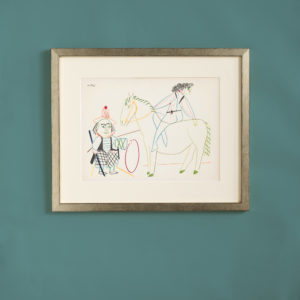
Picasso and the Human Comedy, Verve, Vol. VIII, No 29/30, 1954
£795 eachPicasso and the Human Comedy, Verve, Vol. VIII, No 29/30, 1954
Original lithograph print from Verve Vol. VIII, No 29/30 printed by the Master Printers Mourlot Frères in 1954. Framed in champagne gold with a cream mount.£795 each -
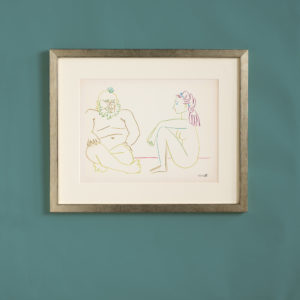
Picasso and the Human Comedy, Verve, Vol. VIII, No 29/30, 1954
£795 eachPicasso and the Human Comedy, Verve, Vol. VIII, No 29/30, 1954
Original lithograph print from Verve Vol. VIII, No 29/30 printed by the Master Printers Mourlot Frères in 1954. Framed in champagne gold with a cream mount.£795 each -
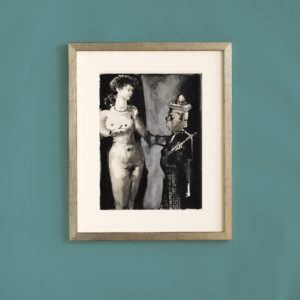
Picasso and the Human Comedy, Verve, Vol. VIII, No 29/30, 1954
£795 eachPicasso and the Human Comedy, Verve, Vol. VIII, No 29/30, 1954
Original lithograph print from Verve Vol. VIII, No 29/30 printed by the Master Printers Mourlot Frères in 1954. Framed in champagne gold with a cream mount.£795 each -
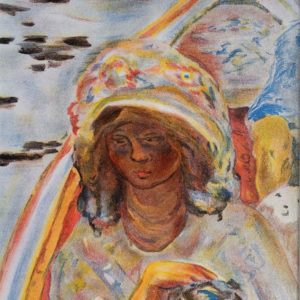
Portrait Fragment by Pierre Bonnard, Verve Vol 2 / No. 5-6.
£600Portrait Fragment by Pierre Bonnard, Verve Vol 2 / No. 5-6.
The Verve Review was a purposefully luxurious. It ran from 1937 to 1960, but with only 38 editions available, due to the high degree of design and editorial work dedicated to each issue. Each edition contained unique lithographic prints, commissioned by the editor, and each cover a double-page lithograph elaborated by one of the artists contained within. It was the brainchild of its editor Stratis Eleftheriades, a Greek National who moved to Paris in the early thirties to take part in the growing Modernist movement, writing under the name of Teriade.£600 -
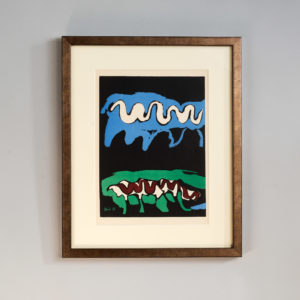
The Four Elements, Earth by Francisco Bores, Verve Vol. 1 / No. 1.
£600The Four Elements, Earth by Francisco Bores, Verve Vol. 1 / No. 1.
The Verve Review was a purposefully luxurious. It ran from 1937 to 1960, but with only 38 editions available, due to the high degree of design and editorial work dedicated to each issue. Each edition contained unique lithographic prints, commissioned by the editor, and each cover a double-page lithograph elaborated by one of the artists contained within. It was the brainchild of its editor Stratis Eleftheriades, a Greek National who moved to Paris in the early thirties to take part in the growing Modernist movement, writing under the name of Teriade.£600 -
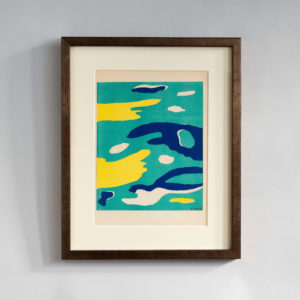
The Four Elements, Water by Fernand Leger, Verve Vol. 1 / No. 1.
£600The Four Elements, Water by Fernand Leger, Verve Vol. 1 / No. 1.
The Verve Review was a purposefully luxurious. It ran from 1937 to 1960, but with only 38 editions available, due to the high degree of design and editorial work dedicated to each issue. Each edition contained unique lithographic prints, commissioned by the editor, and each cover a double-page lithograph elaborated by one of the artists contained within. It was the brainchild of its editor Stratis Eleftheriades, a Greek National who moved to Paris in the early thirties to take part in the growing Modernist movement, writing under the name of Teriade.£600 -
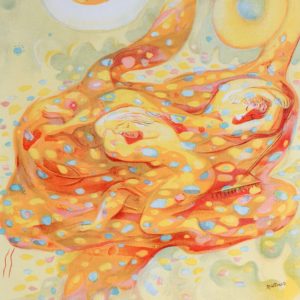
Autumn by Abraham Rattner, Verve Vol. 1 / No. 3.
£600Autumn by Abraham Rattner, Verve Vol. 1 / No. 3.
The Verve Review was a purposefully luxurious. It ran from 1937 to 1960, but with only 38 editions available, due to the high degree of design and editorial work dedicated to each issue. Each edition contained unique lithographic prints, commissioned by the editor, and each cover a double-page lithograph elaborated by one of the artists contained within. It was the brainchild of its editor Stratis Eleftheriades, a Greek National who moved to Paris in the early thirties to take part in the growing Modernist movement, writing under the name of Teriade.£600 -
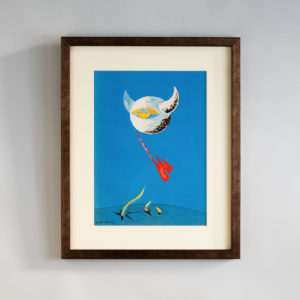
The Moon by André Masson, Verve Vol. 1 / No. 2.
£600The Moon by André Masson, Verve Vol. 1 / No. 2.
The Verve Review was a purposefully luxurious. It ran from 1937 to 1960, but with only 38 editions available, due to the high degree of design and editorial work dedicated to each issue. Each edition contained unique lithographic prints, commissioned by the editor, and each cover a double-page lithograph elaborated by one of the artists contained within. It was the brainchild of its editor Stratis Eleftheriades, a Greek National who moved to Paris in the early thirties to take part in the growing Modernist movement, writing under the name of Teriade.£600 -
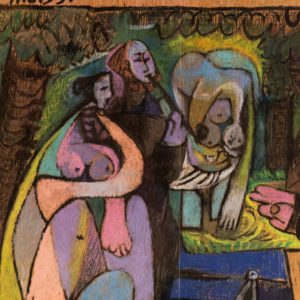
Pablo Picasso, Lithograph based on Edouard Manet’s, Luncheon on the the Grass. c1962
£550Pablo Picasso, Lithograph based on Edouard Manet’s, Luncheon on the the Grass. c1962
From 1959-1962 Pablo Picasso and his second wife Jacqueline lived at Château de Vauvenargues near Aix-en-Provence. He spent most of his time of his time on 140 drawings and 27 paintings, lino-cuts and cardboard models all on the theme of Manet’s, Le Déjeuner sur l’herbe. Manet's original painting from 1862 showing a nude woman sitting between two fully clothed men was a scandal for the time.£550 -
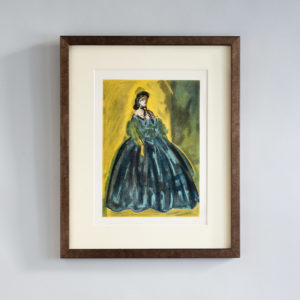
Portraits Part II by Constantin Guys, Verve Vol 2 / No. 5-6.
£500Portraits Part II by Constantin Guys, Verve Vol 2 / No. 5-6.
The Verve Review was a purposefully luxurious. It ran from 1937 to 1960, but with only 38 editions available, due to the high degree of design and editorial work dedicated to each issue. Each edition contained unique lithographic prints, commissioned by the editor, and each cover a double-page lithograph elaborated by one of the artists contained within. It was the brainchild of its editor Stratis Eleftheriades, a Greek National who moved to Paris in the early thirties to take part in the growing Modernist movement, writing under the name of Teriade.£500 -
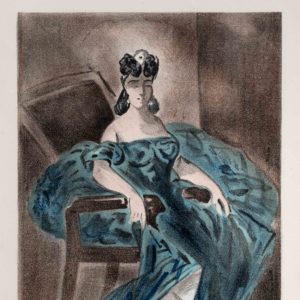
Portraits Part I by Constantin Guys, Verve Vol 2 / No. 5-6.
£500Portraits Part I by Constantin Guys, Verve Vol 2 / No. 5-6.
The Verve Review was a purposefully luxurious. It ran from 1937 to 1960, but with only 38 editions available, due to the high degree of design and editorial work dedicated to each issue. Each edition contained unique lithographic prints, commissioned by the editor, and each cover a double-page lithograph elaborated by one of the artists contained within. It was the brainchild of its editor Stratis Eleftheriades, a Greek National who moved to Paris in the early thirties to take part in the growing Modernist movement, writing under the name of Teriade.£500 -
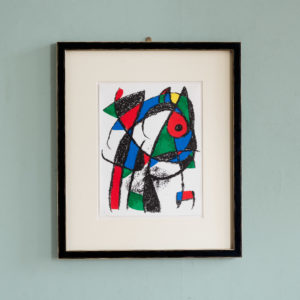
Joan Miró, Lithographie originale
£500Joan Miró, Lithographie originale
Joan Miró produced nearly 1,800 original lithographs and prints at the Maeght studio. He composed his score, invented his alphabet, scattered his symbols across the white page of his writing, close to graffiti. Everything was free, released, aerial, penetrated with interior light. He celebrated marriages between all techniques. Nothing was ever excessive or gratuitous. His creation cut to the essential. Miró created his own language. Dots, lines, scratches, graffiti, writing, mysterious anthropomorphic figures swimming or flying through infinite territory, fed by sparks. The power of black, awestruck colors… And the paper always defended its whiteness. Miró was about drawing above all else. His energy burst on to the sheet.£500 -
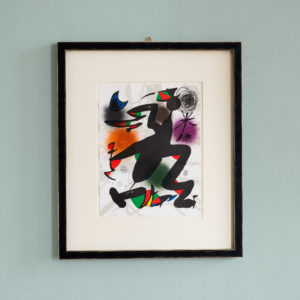
Joan Miró, Lithographie originale
£500Joan Miró, Lithographie originale
Joan Miró produced nearly 1,800 original lithographs and prints at the Maeght studio. He composed his score, invented his alphabet, scattered his symbols across the white page of his writing, close to graffiti. Everything was free, released, aerial, penetrated with interior light. He celebrated marriages between all techniques. Nothing was ever excessive or gratuitous. His creation cut to the essential. Miró created his own language. Dots, lines, scratches, graffiti, writing, mysterious anthropomorphic figures swimming or flying through infinite territory, fed by sparks. The power of black, awestruck colors… And the paper always defended its whiteness. Miró was about drawing above all else. His energy burst on to the sheet.£500 -
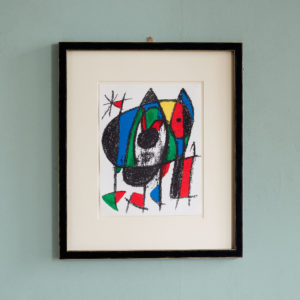
Joan Miró, Lithographie originale
£500Joan Miró, Lithographie originale
Joan Miró produced nearly 1,800 original lithographs and prints at the Maeght studio. He composed his score, invented his alphabet, scattered his symbols across the white page of his writing, close to graffiti. Everything was free, released, aerial, penetrated with interior light. He celebrated marriages between all techniques. Nothing was ever excessive or gratuitous. His creation cut to the essential. Miró created his own language. Dots, lines, scratches, graffiti, writing, mysterious anthropomorphic figures swimming or flying through infinite territory, fed by sparks. The power of black, awestruck colors… And the paper always defended its whiteness. Miró was about drawing above all else. His energy burst on to the sheet.£500 -
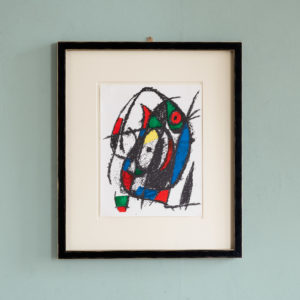
Joan Miró, Lithographie originale
£500Joan Miró, Lithographie originale
Joan Miró produced nearly 1,800 original lithographs and prints at the Maeght studio. He composed his score, invented his alphabet, scattered his symbols across the white page of his writing, close to graffiti. Everything was free, released, aerial, penetrated with interior light. He celebrated marriages between all techniques. Nothing was ever excessive or gratuitous. His creation cut to the essential. Miró created his own language. Dots, lines, scratches, graffiti, writing, mysterious anthropomorphic figures swimming or flying through infinite territory, fed by sparks. The power of black, awestruck colors… And the paper always defended its whiteness. Miró was about drawing above all else. His energy burst on to the sheet.£500 -
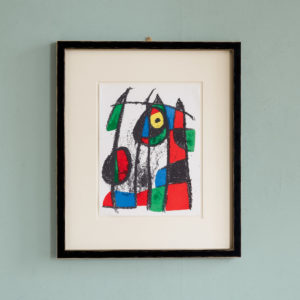
Joan Miró, Lithographie originale
£500Joan Miró, Lithographie originale
Joan Miró produced nearly 1,800 original lithographs and prints at the Maeght studio. He composed his score, invented his alphabet, scattered his symbols across the white page of his writing, close to graffiti. Everything was free, released, aerial, penetrated with interior light. He celebrated marriages between all techniques. Nothing was ever excessive or gratuitous. His creation cut to the essential. Miró created his own language. Dots, lines, scratches, graffiti, writing, mysterious anthropomorphic figures swimming or flying through infinite territory, fed by sparks. The power of black, awestruck colors… And the paper always defended its whiteness. Miró was about drawing above all else. His energy burst on to the sheet.£500 -
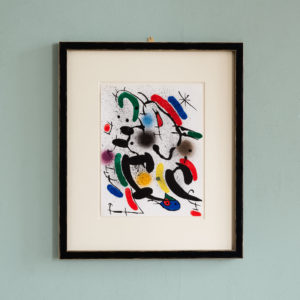
Joan Miró, Lithographie originale
£500Joan Miró, Lithographie originale
Joan Miró produced nearly 1,800 original lithographs and prints at the Maeght studio. He composed his score, invented his alphabet, scattered his symbols across the white page of his writing, close to graffiti. Everything was free, released, aerial, penetrated with interior light. He celebrated marriages between all techniques. Nothing was ever excessive or gratuitous. His creation cut to the essential. Miró created his own language. Dots, lines, scratches, graffiti, writing, mysterious anthropomorphic figures swimming or flying through infinite territory, fed by sparks. The power of black, awestruck colors… And the paper always defended its whiteness. Miró was about drawing above all else. His energy burst on to the sheet.£500 -
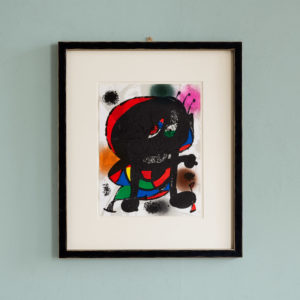
Joan Miró, Lithographie originale
£500Joan Miró, Lithographie originale
Joan Miró produced nearly 1,800 original lithographs and prints at the Maeght studio. He composed his score, invented his alphabet, scattered his symbols across the white page of his writing, close to graffiti. Everything was free, released, aerial, penetrated with interior light. He celebrated marriages between all techniques. Nothing was ever excessive or gratuitous. His creation cut to the essential. Miró created his own language. Dots, lines, scratches, graffiti, writing, mysterious anthropomorphic figures swimming or flying through infinite territory, fed by sparks. The power of black, awestruck colors… And the paper always defended its whiteness. Miró was about drawing above all else. His energy burst on to the sheet.£500 -
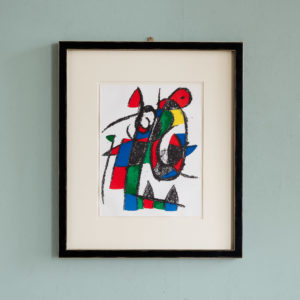
Joan Miró, Lithographie originale
£500Joan Miró, Lithographie originale
Joan Miró produced nearly 1,800 original lithographs and prints at the Maeght studio. He composed his score, invented his alphabet, scattered his symbols across the white page of his writing, close to graffiti. Everything was free, released, aerial, penetrated with interior light. He celebrated marriages between all techniques. Nothing was ever excessive or gratuitous. His creation cut to the essential. Miró created his own language. Dots, lines, scratches, graffiti, writing, mysterious anthropomorphic figures swimming or flying through infinite territory, fed by sparks. The power of black, awestruck colors… And the paper always defended its whiteness. Miró was about drawing above all else. His energy burst on to the sheet.£500 -
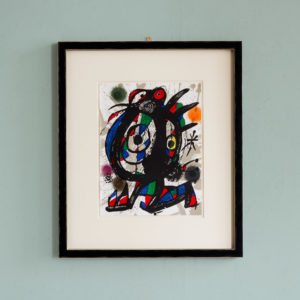
Joan Miró, Lithographie originale
£500Joan Miró, Lithographie originale
Joan Miró produced nearly 1,800 original lithographs and prints at the Maeght studio. He composed his score, invented his alphabet, scattered his symbols across the white page of his writing, close to graffiti. Everything was free, released, aerial, penetrated with interior light. He celebrated marriages between all techniques. Nothing was ever excessive or gratuitous. His creation cut to the essential. Miró created his own language. Dots, lines, scratches, graffiti, writing, mysterious anthropomorphic figures swimming or flying through infinite territory, fed by sparks. The power of black, awestruck colors… And the paper always defended its whiteness. Miró was about drawing above all else. His energy burst on to the sheet.£500 -
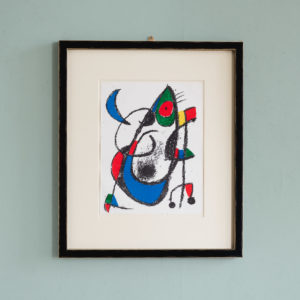
Joan Miró, Lithographie originale
£500Joan Miró, Lithographie originale
Joan Miró produced nearly 1,800 original lithographs and prints at the Maeght studio. He composed his score, invented his alphabet, scattered his symbols across the white page of his writing, close to graffiti. Everything was free, released, aerial, penetrated with interior light. He celebrated marriages between all techniques. Nothing was ever excessive or gratuitous. His creation cut to the essential. Miró created his own language. Dots, lines, scratches, graffiti, writing, mysterious anthropomorphic figures swimming or flying through infinite territory, fed by sparks. The power of black, awestruck colors… And the paper always defended its whiteness. Miró was about drawing above all else. His energy burst on to the sheet.£500 -
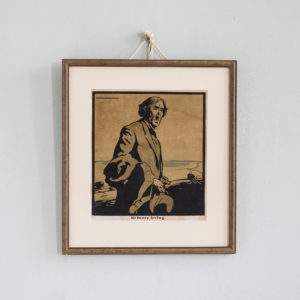
Sir Henry Irving
£450 -
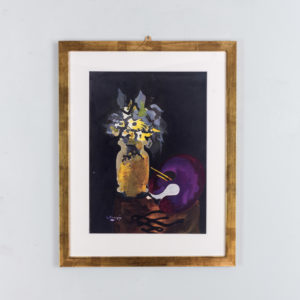
George Braque lithograph published for Verve, vol. VIII No 31/32
£450 eachGeorge Braque lithograph published for Verve, vol. VIII No 31/32
Original lithograph, published 1955 for Verve, vol. VIII No 31/32, The Intimate Sketchbooks of G. Braque. Gilt framed.£450 each -
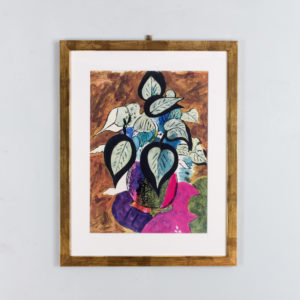
George Braque lithograph published for Verve, vol. VIII No 31/32
£450 eachGeorge Braque lithograph published for Verve, vol. VIII No 31/32
Original lithograph, published 1955 for Verve, vol. VIII No 31/32, The Intimate Sketchbooks of G. Braque. Gilt framed.£450 each -
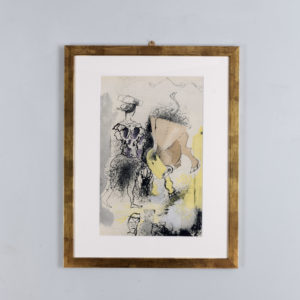
George Braque lithograph published for Verve, vol. VIII No 31/32
£450 eachGeorge Braque lithograph published for Verve, vol. VIII No 31/32
Original lithograph, published 1955 for Verve, vol. VIII No 31/32, The Intimate Sketchbooks of G. Braque. Gilt framed.£450 each -
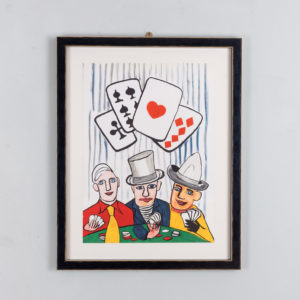
Alexander Calder lithograph of Three Card Players
£380Alexander Calder lithograph of Three Card Players
Published for 'Derrière le Miroir' in 1975. Framed In October 1945, the French art dealer Aimé Maeght opened his art gallery at 13 Rue de Téhéran in Paris. His magazine 'Derrière le Miroir' was created in October 1946 (n°1) and published without interruption until 1982 (n°253). Its original articles and illustrations by the gallery artists were famous at the time. The magazine covered only the artists exhibited by Maeght gallery either through personal or group exhibitions.£380 -
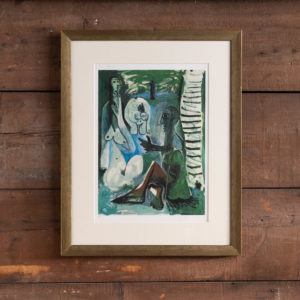
Pablo Picasso, Lithograph of a Study for the Reworking of Edouard Manet’s, Luncheon on the the Grass. c1962
£350Pablo Picasso, Lithograph of a Study for the Reworking of Edouard Manet’s, Luncheon on the the Grass. c1962
From 1959-1962 Pablo Picasso and his second wife Jacqueline lived at Château de Vauvenargues near Aix-en-Provence. He spent most of his time of his time on 140 drawings and 27 paintings, lino-cuts and cardboard models all on the theme of Manet’s, Le Déjeuner sur l’herbe. Manet's original painting from 1862 showing a nude woman sitting between two fully clothed men was a scandal for the time.£350 -
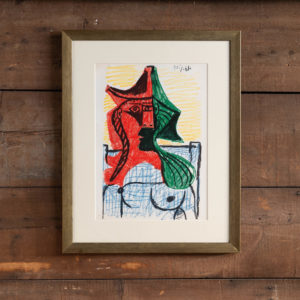
Pablo Picasso, Lithograph of a Bather Study of Edouard Manet’s, Luncheon on the the Grass. c1962
£350Pablo Picasso, Lithograph of a Bather Study of Edouard Manet’s, Luncheon on the the Grass. c1962
From 1959-1962 Pablo Picasso and his second wife Jacqueline lived at Château de Vauvenargues near Aix-en-Provence. He spent most of his time of his time on 140 drawings and 27 paintings, lino-cuts and cardboard models all on the theme of Manet’s, Le Déjeuner sur l’herbe. Manet's original painting from 1862 showing a nude woman sitting between two fully clothed men was a scandal for the time.£350 -
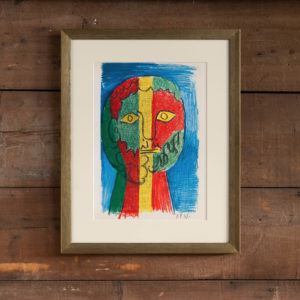
Pablo Picasso, Lithograph of a Head Study of Edouard Manet’s, Luncheon on the the Grass. c1962
£350Pablo Picasso, Lithograph of a Head Study of Edouard Manet’s, Luncheon on the the Grass. c1962
From 1959-1962 Pablo Picasso and his second wife Jacqueline lived at Château de Vauvenargues near Aix-en-Provence. He spent most of his time of his time on 140 drawings and 27 paintings, lino-cuts and cardboard models all on the theme of Manet’s, Le Déjeuner sur l’herbe. Manet's original painting from 1862 showing a nude woman sitting between two fully clothed men was a scandal for the time.£350 -
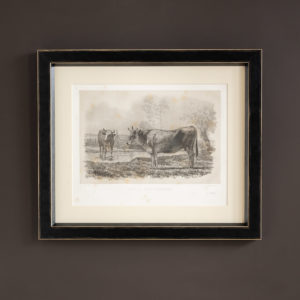
Original lithographs of Cattle Breeds published 1862, ‘Vache Parthenaise’,
£300 eachOriginal lithographs of Cattle Breeds published 1862, ‘Vache Parthenaise’,
Printed by Lemercier of Paris.£300 each -
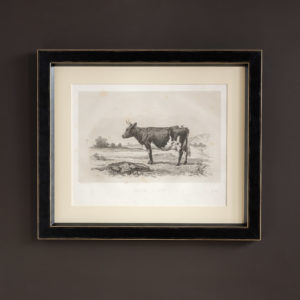
Original lithographs of Cattle Breeds published 1862, ‘Vache D’Ayr’,
£300 eachOriginal lithographs of Cattle Breeds published 1862, ‘Vache D’Ayr’,
Printed by Lemercier of Paris.£300 each -
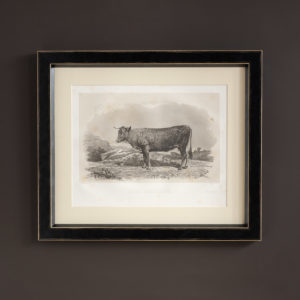
Original lithographs of Cattle Breeds published 1862, ‘Vache Garonnaise’,
£300 eachOriginal lithographs of Cattle Breeds published 1862, ‘Vache Garonnaise’,
Printed by Lemercier of Paris.£300 each -
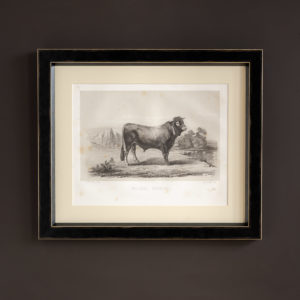
Original lithographs of Cattle Breeds published 1862, ‘Taureau Bazadais’,
£300 eachOriginal lithographs of Cattle Breeds published 1862, ‘Taureau Bazadais’,
Printed by Lemercier of Paris.£300 each -
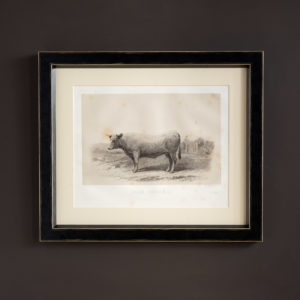
Original lithographs of Cattle Breeds published 1862, ‘Vache Charolaise’,
£300 eachOriginal lithographs of Cattle Breeds published 1862, ‘Vache Charolaise’,
Printed by Lemercier of Paris.£300 each -
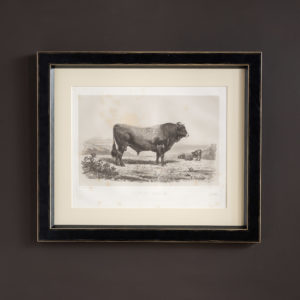
Original lithographs of Cattle Breeds published 1862, ‘Taureau Gascon’,
£300 eachOriginal lithographs of Cattle Breeds published 1862, ‘Taureau Gascon’,
Printed by Lemercier of Paris.£300 each -
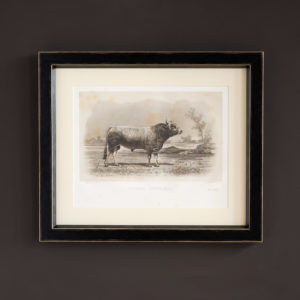
Original lithographs of Cattle Breeds published 1862, ‘Taureau Parthenais’,
£300 eachOriginal lithographs of Cattle Breeds published 1862, ‘Taureau Parthenais’,
Printed by Lemercier of Paris.£300 each -
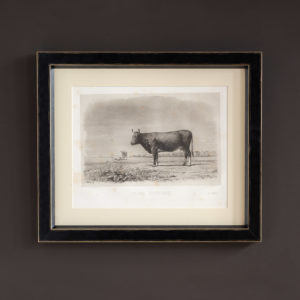
Original lithographs of Cattle Breeds published 1862, ‘Vache Bretonne’,
£300 eachOriginal lithographs of Cattle Breeds published 1862, ‘Vache Bretonne’,
Printed by Lemercier of Paris.£300 each -
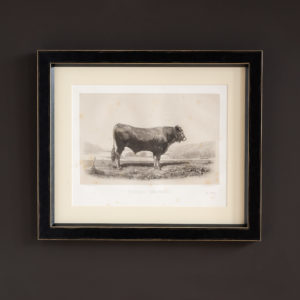
Original lithographs of Cattle Breeds published 1862, ‘Taureau Garonnais’,
£300 eachOriginal lithographs of Cattle Breeds published 1862, ‘Taureau Garonnais’,
Printed by Lemercier of Paris.£300 each -
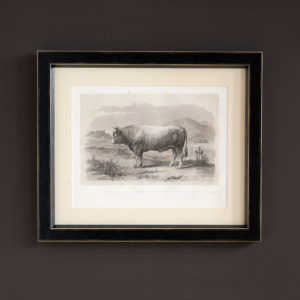
Original lithographs of Cattle Breeds published 1862, ‘Taureau Limousin’,
£300 eachOriginal lithographs of Cattle Breeds published 1862, ‘Taureau Limousin’,
Printed by Lemercier of Paris.£300 each -
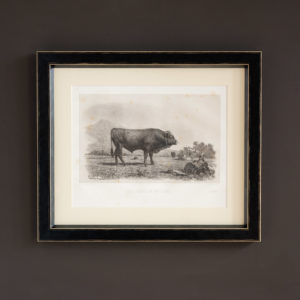
Original lithographs of Cattle Breeds published 1862, ‘Taureau D’Aubrac’,
£300 eachOriginal lithographs of Cattle Breeds published 1862, ‘Taureau D’Aubrac’,
Printed by Lemercier of Paris.£300 each -
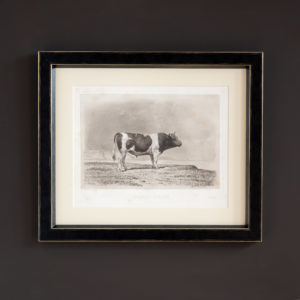
Original lithographs of Cattle Breeds published 1862, ‘Taureau Breton’,
£300 eachOriginal lithographs of Cattle Breeds published 1862, ‘Taureau Breton’,
Printed by Lemercier of Paris.£300 each -
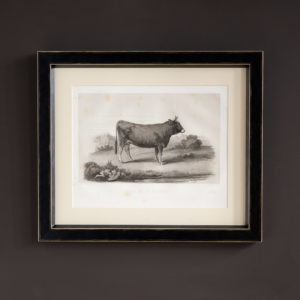
Original lithographs of Cattle Breeds published 1862, ‘Vache D’Aubrac’,
£300 eachOriginal lithographs of Cattle Breeds published 1862, ‘Vache D’Aubrac’,
Printed by Lemercier of Paris.£300 each -
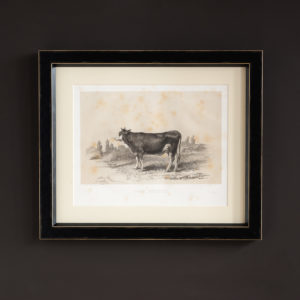
Original lithographs of Cattle Breeds published 1862, ‘Vache Mancelle’,
£300 eachOriginal lithographs of Cattle Breeds published 1862, ‘Vache Mancelle’,
Printed by Lemercier of Paris.£300 each -
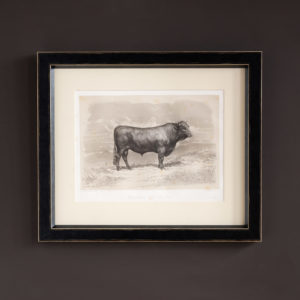
Original lithographs of Cattle Breeds published 1862, ‘Taureau de Salers’,
£300 eachOriginal lithographs of Cattle Breeds published 1862, ‘Taureau de Salers’,
Printed by Lemercier of Paris.£300 each -
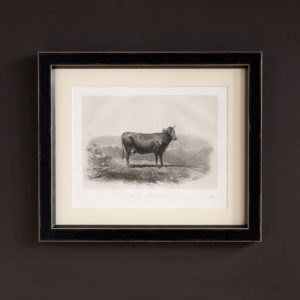
Original lithographs of Cattle Breeds published 1862, ‘Vache D’Oberhasli’,
£300 eachOriginal lithographs of Cattle Breeds published 1862, ‘Vache D’Oberhasli’,
Printed by Lemercier of Paris.£300 each -
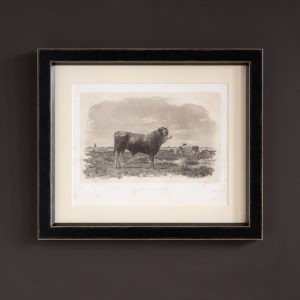
Original lithographs of Cattle Breeds published 1862, ‘Taureau Landais’,
£300 eachOriginal lithographs of Cattle Breeds published 1862, ‘Taureau Landais’,
Printed by Lemercier of Paris.£300 each -
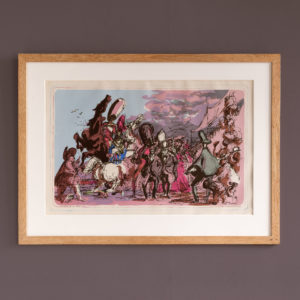
This England
£300This England
Framed and mounted, coloured lithograph by the Anglo-Polish draughtsman and expressionist painter Feliks Topolski showing Winston Churchill and Clement Atlee on The Mall. The work forms part of the post war Prints for Schools series. The purpose of Prints for Schools was to provide schools and other public institutions with examples of work by good artists at a low cost. The lithographs were all of uniform size so that they could be interchangeable in a single frame or group of frames to allow them to be rotated. The contributing artists were chosen by a committee chaired by the art historian Herbert Read.£300 -
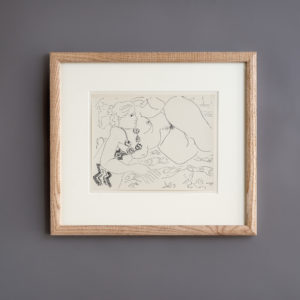
Cahiers D’Art, Dessins de Matisse
£300 eachCahiers D’Art, Dessins de Matisse
Cahiers d'Art is a French artistic and literary journal originally founded in 1926 by Christian Zervos, a Greek philosopher, editor. Born in 1889 in Argostoli on the Greek island of Cephalonia he was brought up in Alexandria, Egypt, finally moving to Paris in 1922. In 1924 Zervos joined the publishing firm Editions Morancé writing art articles for the magazine L'Art d'aujourd '. As an editor, he met many of the artists about whom the magazine wrote: Henri Matisse, Georges Braque, Ferdinand Léger, and Pablo Picasso. He left Morancé in 1926 to found his own journal Cahiers d'art becoming simultaneously publisher, director, model maker, chief editor and main editor. Each issue balanced primitive arts with the modern and contemporary arts and articles by art critics with more literary and poetic texts. According to Zervos, the interest in prehistoric, ancient and extra-European arts was necessary to get a glimpse of contemporary art. It was Zervos who took on the enormous task of documenting all the works of Pablo Picasso into a33-volume catalogue raisonnée, published between 1932 and 1978. One of his deepest wishes was to build up with Cahiers d’Art the visual archives of the artists he considered important. Zervos married Yvonne Marion who ran an art gallery, Galerie du Dragon, next to the location of her husband's shop, the rue Dragon on the left bank of Paris. Madame Zervos became an integral part of her husband's accomplishment and assembling their art collection. Initially published from 1926 to 1960 Cahiers d'Art still exists today after Swedish collector Staffan Ahrenberg purchased the publication and relaunched it in October 2012.£300 each -
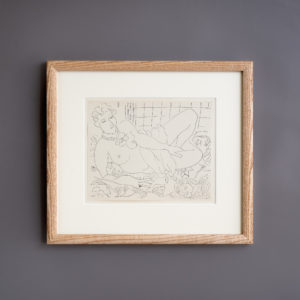
Cahiers D’Art, Dessins de Matisse
£300 eachCahiers D’Art, Dessins de Matisse
Cahiers d'Art is a French artistic and literary journal originally founded in 1926 by Christian Zervos, a Greek philosopher, editor. Born in 1889 in Argostoli on the Greek island of Cephalonia he was brought up in Alexandria, Egypt, finally moving to Paris in 1922. In 1924 Zervos joined the publishing firm Editions Morancé writing art articles for the magazine L'Art d'aujourd '. As an editor, he met many of the artists about whom the magazine wrote: Henri Matisse, Georges Braque, Ferdinand Léger, and Pablo Picasso. He left Morancé in 1926 to found his own journal Cahiers d'art becoming simultaneously publisher, director, model maker, chief editor and main editor. Each issue balanced primitive arts with the modern and contemporary arts and articles by art critics with more literary and poetic texts. According to Zervos, the interest in prehistoric, ancient and extra-European arts was necessary to get a glimpse of contemporary art. It was Zervos who took on the enormous task of documenting all the works of Pablo Picasso into a33-volume catalogue raisonnée, published between 1932 and 1978. One of his deepest wishes was to build up with Cahiers d’Art the visual archives of the artists he considered important. Zervos married Yvonne Marion who ran an art gallery, Galerie du Dragon, next to the location of her husband's shop, the rue Dragon on the left bank of Paris. Madame Zervos became an integral part of her husband's accomplishment and assembling their art collection. Initially published from 1926 to 1960 Cahiers d'Art still exists today after Swedish collector Staffan Ahrenberg purchased the publication and relaunched it in October 2012.£300 each -
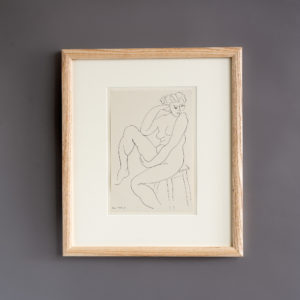
Cahiers D’Art, Dessins de Matisse
£300 eachCahiers D’Art, Dessins de Matisse
Cahiers d'Art is a French artistic and literary journal originally founded in 1926 by Christian Zervos, a Greek philosopher, editor. Born in 1889 in Argostoli on the Greek island of Cephalonia he was brought up in Alexandria, Egypt, finally moving to Paris in 1922. In 1924 Zervos joined the publishing firm Editions Morancé writing art articles for the magazine L'Art d'aujourd '. As an editor, he met many of the artists about whom the magazine wrote: Henri Matisse, Georges Braque, Ferdinand Léger, and Pablo Picasso. He left Morancé in 1926 to found his own journal Cahiers d'art becoming simultaneously publisher, director, model maker, chief editor and main editor. Each issue balanced primitive arts with the modern and contemporary arts and articles by art critics with more literary and poetic texts. According to Zervos, the interest in prehistoric, ancient and extra-European arts was necessary to get a glimpse of contemporary art. It was Zervos who took on the enormous task of documenting all the works of Pablo Picasso into a33-volume catalogue raisonnée, published between 1932 and 1978. One of his deepest wishes was to build up with Cahiers d’Art the visual archives of the artists he considered important. Zervos married Yvonne Marion who ran an art gallery, Galerie du Dragon, next to the location of her husband's shop, the rue Dragon on the left bank of Paris. Madame Zervos became an integral part of her husband's accomplishment and assembling their art collection. Initially published from 1926 to 1960 Cahiers d'Art still exists today after Swedish collector Staffan Ahrenberg purchased the publication and relaunched it in October 2012.£300 each -
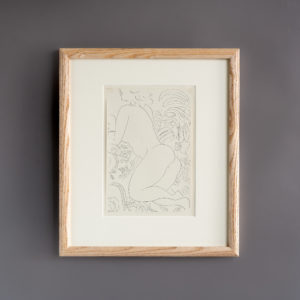
Cahiers D’Art, Dessins de Matisse
£300 eachCahiers D’Art, Dessins de Matisse
Cahiers d'Art is a French artistic and literary journal originally founded in 1926 by Christian Zervos, a Greek philosopher, editor. Born in 1889 in Argostoli on the Greek island of Cephalonia he was brought up in Alexandria, Egypt, finally moving to Paris in 1922. In 1924 Zervos joined the publishing firm Editions Morancé writing art articles for the magazine L'Art d'aujourd '. As an editor, he met many of the artists about whom the magazine wrote: Henri Matisse, Georges Braque, Ferdinand Léger, and Pablo Picasso. He left Morancé in 1926 to found his own journal Cahiers d'art becoming simultaneously publisher, director, model maker, chief editor and main editor. Each issue balanced primitive arts with the modern and contemporary arts and articles by art critics with more literary and poetic texts. According to Zervos, the interest in prehistoric, ancient and extra-European arts was necessary to get a glimpse of contemporary art. It was Zervos who took on the enormous task of documenting all the works of Pablo Picasso into a33-volume catalogue raisonnée, published between 1932 and 1978. One of his deepest wishes was to build up with Cahiers d’Art the visual archives of the artists he considered important. Zervos married Yvonne Marion who ran an art gallery, Galerie du Dragon, next to the location of her husband's shop, the rue Dragon on the left bank of Paris. Madame Zervos became an integral part of her husband's accomplishment and assembling their art collection. Initially published from 1926 to 1960 Cahiers d'Art still exists today after Swedish collector Staffan Ahrenberg purchased the publication and relaunched it in October 2012.£300 each -
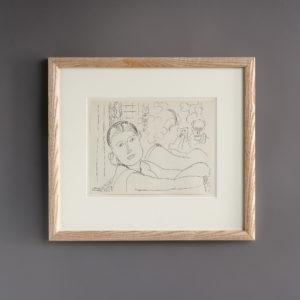
Cahiers D’Art, Dessins de Matisse
£300 eachCahiers D’Art, Dessins de Matisse
Cahiers d'Art is a French artistic and literary journal originally founded in 1926 by Christian Zervos, a Greek philosopher, editor. Born in 1889 in Argostoli on the Greek island of Cephalonia he was brought up in Alexandria, Egypt, finally moving to Paris in 1922. In 1924 Zervos joined the publishing firm Editions Morancé writing art articles for the magazine L'Art d'aujourd '. As an editor, he met many of the artists about whom the magazine wrote: Henri Matisse, Georges Braque, Ferdinand Léger, and Pablo Picasso. He left Morancé in 1926 to found his own journal Cahiers d'art becoming simultaneously publisher, director, model maker, chief editor and main editor. Each issue balanced primitive arts with the modern and contemporary arts and articles by art critics with more literary and poetic texts. According to Zervos, the interest in prehistoric, ancient and extra-European arts was necessary to get a glimpse of contemporary art. It was Zervos who took on the enormous task of documenting all the works of Pablo Picasso into a33-volume catalogue raisonnée, published between 1932 and 1978. One of his deepest wishes was to build up with Cahiers d’Art the visual archives of the artists he considered important. Zervos married Yvonne Marion who ran an art gallery, Galerie du Dragon, next to the location of her husband's shop, the rue Dragon on the left bank of Paris. Madame Zervos became an integral part of her husband's accomplishment and assembling their art collection. Initially published from 1926 to 1960 Cahiers d'Art still exists today after Swedish collector Staffan Ahrenberg purchased the publication and relaunched it in October 2012.£300 each -
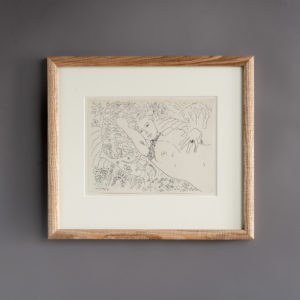
Cahiers D’Art, Dessins de Matisse
£300 eachCahiers D’Art, Dessins de Matisse
Cahiers d'Art is a French artistic and literary journal originally founded in 1926 by Christian Zervos, a Greek philosopher, editor. Born in 1889 in Argostoli on the Greek island of Cephalonia he was brought up in Alexandria, Egypt, finally moving to Paris in 1922. In 1924 Zervos joined the publishing firm Editions Morancé writing art articles for the magazine L'Art d'aujourd '. As an editor, he met many of the artists about whom the magazine wrote: Henri Matisse, Georges Braque, Ferdinand Léger, and Pablo Picasso. He left Morancé in 1926 to found his own journal Cahiers d'art becoming simultaneously publisher, director, model maker, chief editor and main editor. Each issue balanced primitive arts with the modern and contemporary arts and articles by art critics with more literary and poetic texts. According to Zervos, the interest in prehistoric, ancient and extra-European arts was necessary to get a glimpse of contemporary art. It was Zervos who took on the enormous task of documenting all the works of Pablo Picasso into a33-volume catalogue raisonnée, published between 1932 and 1978. One of his deepest wishes was to build up with Cahiers d’Art the visual archives of the artists he considered important. Zervos married Yvonne Marion who ran an art gallery, Galerie du Dragon, next to the location of her husband's shop, the rue Dragon on the left bank of Paris. Madame Zervos became an integral part of her husband's accomplishment and assembling their art collection. Initially published from 1926 to 1960 Cahiers d'Art still exists today after Swedish collector Staffan Ahrenberg purchased the publication and relaunched it in October 2012.£300 each -
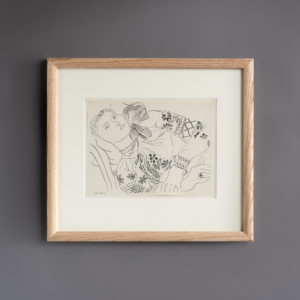
Cahiers D’Art, Dessins de Matisse
£300 eachCahiers D’Art, Dessins de Matisse
Cahiers d'Art is a French artistic and literary journal originally founded in 1926 by Christian Zervos, a Greek philosopher, editor. Born in 1889 in Argostoli on the Greek island of Cephalonia he was brought up in Alexandria, Egypt, finally moving to Paris in 1922. In 1924 Zervos joined the publishing firm Editions Morancé writing art articles for the magazine L'Art d'aujourd '. As an editor, he met many of the artists about whom the magazine wrote: Henri Matisse, Georges Braque, Ferdinand Léger, and Pablo Picasso. He left Morancé in 1926 to found his own journal Cahiers d'art becoming simultaneously publisher, director, model maker, chief editor and main editor. Each issue balanced primitive arts with the modern and contemporary arts and articles by art critics with more literary and poetic texts. According to Zervos, the interest in prehistoric, ancient and extra-European arts was necessary to get a glimpse of contemporary art. It was Zervos who took on the enormous task of documenting all the works of Pablo Picasso into a33-volume catalogue raisonnée, published between 1932 and 1978. One of his deepest wishes was to build up with Cahiers d’Art the visual archives of the artists he considered important. Zervos married Yvonne Marion who ran an art gallery, Galerie du Dragon, next to the location of her husband's shop, the rue Dragon on the left bank of Paris. Madame Zervos became an integral part of her husband's accomplishment and assembling their art collection. Initially published from 1926 to 1960 Cahiers d'Art still exists today after Swedish collector Staffan Ahrenberg purchased the publication and relaunched it in October 2012.£300 each -
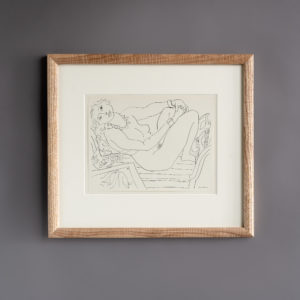
Cahiers D’Art, Dessins de Matisse
£300 eachCahiers D’Art, Dessins de Matisse
Cahiers d'Art is a French artistic and literary journal originally founded in 1926 by Christian Zervos, a Greek philosopher, editor. Born in 1889 in Argostoli on the Greek island of Cephalonia he was brought up in Alexandria, Egypt, finally moving to Paris in 1922. In 1924 Zervos joined the publishing firm Editions Morancé writing art articles for the magazine L'Art d'aujourd '. As an editor, he met many of the artists about whom the magazine wrote: Henri Matisse, Georges Braque, Ferdinand Léger, and Pablo Picasso. He left Morancé in 1926 to found his own journal Cahiers d'art becoming simultaneously publisher, director, model maker, chief editor and main editor. Each issue balanced primitive arts with the modern and contemporary arts and articles by art critics with more literary and poetic texts. According to Zervos, the interest in prehistoric, ancient and extra-European arts was necessary to get a glimpse of contemporary art. It was Zervos who took on the enormous task of documenting all the works of Pablo Picasso into a33-volume catalogue raisonnée, published between 1932 and 1978. One of his deepest wishes was to build up with Cahiers d’Art the visual archives of the artists he considered important. Zervos married Yvonne Marion who ran an art gallery, Galerie du Dragon, next to the location of her husband's shop, the rue Dragon on the left bank of Paris. Madame Zervos became an integral part of her husband's accomplishment and assembling their art collection. Initially published from 1926 to 1960 Cahiers d'Art still exists today after Swedish collector Staffan Ahrenberg purchased the publication and relaunched it in October 2012.£300 each -
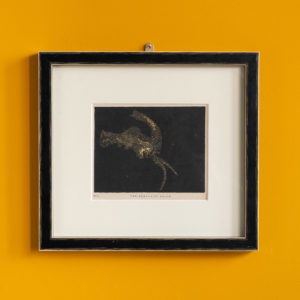
“The Beauty of the Heavens: A Pictorial Display of The Astronomical Phenomena of The Universe” by Charles Blunt, ‘The Nebula of Orion’,
£295 each“The Beauty of the Heavens: A Pictorial Display of The Astronomical Phenomena of The Universe” by Charles Blunt, ‘The Nebula of Orion’,
In the mid-19th century, Home Education had become very popular for the masses and lecturer, Charles Blunt seeing a gap in the market came up with these illustrations. Blunt who specialised in astronomy and natural philosophy, saw the need for a series of ‘accurate yet popular’ plates illustrating the known Universe. These hand-finished aquatints prints were based on Blunt’s own drawings, depicting celestial and astrological subjects.£295 each -
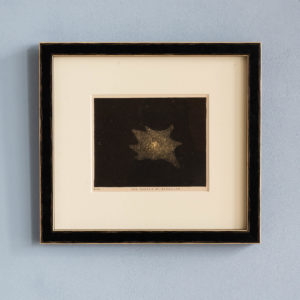
“The Beauty of the Heavens: A Pictorial Display of The Astronomical Phenomena of The Universe” by Charles Blunt, ‘The Nebula of Hercules’,
£295 each“The Beauty of the Heavens: A Pictorial Display of The Astronomical Phenomena of The Universe” by Charles Blunt, ‘The Nebula of Hercules’,
In the mid-19th century, Home Education had become very popular for the masses and lecturer, Charles Blunt seeing a gap in the market came up with these illustrations. Blunt who specialised in astronomy and natural philosophy, saw the need for a series of ‘accurate yet popular’ plates illustrating the known Universe. These hand-finished aquatints prints were based on Blunt’s own drawings, depicting celestial and astrological subjects.£295 each -
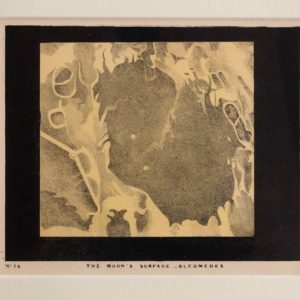
“The Beauty of the Heavens: A Pictorial Display of The Astronomical Phenomena of The Universe” by Charles Blunt, ‘The Moon’s Surface – Cleomedes’,
£295 each“The Beauty of the Heavens: A Pictorial Display of The Astronomical Phenomena of The Universe” by Charles Blunt, ‘The Moon’s Surface – Cleomedes’,
In the mid-19th century, Home Education had become very popular for the masses and lecturer, Charles Blunt seeing a gap in the market came up with these illustrations. Blunt who specialised in astronomy and natural philosophy, saw the need for a series of ‘accurate yet popular’ plates illustrating the known Universe. These hand-finished aquatints prints were based on Blunt’s own drawings, depicting celestial and astrological subjects.£295 each -
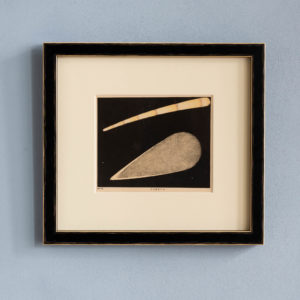
“The Beauty of the Heavens: A Pictorial Display of The Astronomical Phenomena of The Universe” by Charles Blunt, ‘Comets’,
£295 each“The Beauty of the Heavens: A Pictorial Display of The Astronomical Phenomena of The Universe” by Charles Blunt, ‘Comets’,
In the mid-19th century, Home Education had become very popular for the masses and lecturer, Charles Blunt seeing a gap in the market came up with these illustrations. Blunt who specialised in astronomy and natural philosophy, saw the need for a series of ‘accurate yet popular’ plates illustrating the known Universe. These hand-finished aquatints prints were based on Blunt’s own drawings, depicting celestial and astrological subjects.£295 each -
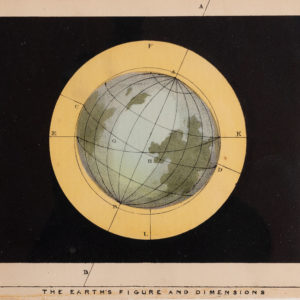
“The Beauty of the Heavens: A Pictorial Display of The Astronomical Phenomena of The Universe” by Charles Blunt, ‘The Earth’s Figure and Dimensions’,
£295 each“The Beauty of the Heavens: A Pictorial Display of The Astronomical Phenomena of The Universe” by Charles Blunt, ‘The Earth’s Figure and Dimensions’,
In the mid-19th century, Home Education had become very popular for the masses and lecturer, Charles Blunt seeing a gap in the market came up with these illustrations. Blunt who specialised in astronomy and natural philosophy, saw the need for a series of ‘accurate yet popular’ plates illustrating the known Universe. These hand-finished aquatints prints were based on Blunt’s own drawings, depicting celestial and astrological subjects.£295 each -
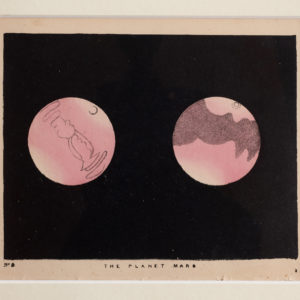
“The Beauty of the Heavens: A Pictorial Display of The Astronomical Phenomena of The Universe” by Charles Blunt, ‘The Planet Mars’,
£295 each“The Beauty of the Heavens: A Pictorial Display of The Astronomical Phenomena of The Universe” by Charles Blunt, ‘The Planet Mars’,
In the mid-19th century, Home Education had become very popular for the masses and lecturer, Charles Blunt seeing a gap in the market came up with these illustrations. Blunt who specialised in astronomy and natural philosophy, saw the need for a series of ‘accurate yet popular’ plates illustrating the known Universe. These hand-finished aquatints prints were based on Blunt’s own drawings, depicting celestial and astrological subjects.£295 each -
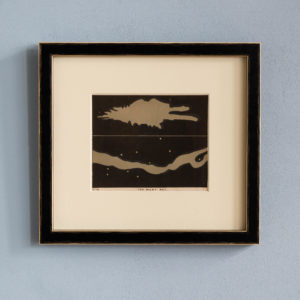
“The Beauty of the Heavens: A Pictorial Display of The Astronomical Phenomena of The Universe” by Charles Blunt, ‘The Milky Way’,
£295 each“The Beauty of the Heavens: A Pictorial Display of The Astronomical Phenomena of The Universe” by Charles Blunt, ‘The Milky Way’,
In the mid-19th century, Home Education had become very popular for the masses and lecturer, Charles Blunt seeing a gap in the market came up with these illustrations. Blunt who specialised in astronomy and natural philosophy, saw the need for a series of ‘accurate yet popular’ plates illustrating the known Universe. These hand-finished aquatints prints were based on Blunt’s own drawings, depicting celestial and astrological subjects.£295 each -
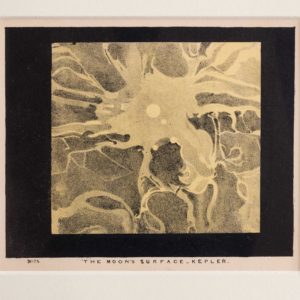
“The Beauty of the Heavens: A Pictorial Display of The Astronomical Phenomena of The Universe” by Charles Blunt, ‘The Moon’s Surface – Kepler’,
£295 each“The Beauty of the Heavens: A Pictorial Display of The Astronomical Phenomena of The Universe” by Charles Blunt, ‘The Moon’s Surface – Kepler’,
In the mid-19th century, Home Education had become very popular for the masses and lecturer, Charles Blunt seeing a gap in the market came up with these illustrations. Blunt who specialised in astronomy and natural philosophy, saw the need for a series of ‘accurate yet popular’ plates illustrating the known Universe. These hand-finished aquatints prints were based on Blunt’s own drawings, depicting celestial and astrological subjects.£295 each -
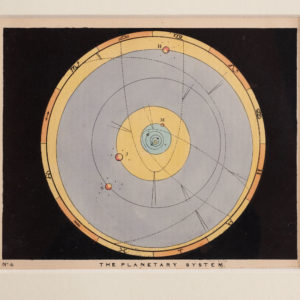
“The Beauty of the Heavens: A Pictorial Display of The Astronomical Phenomena of The Universe” by Charles Blunt, ‘The Planetary System’,
£295 each“The Beauty of the Heavens: A Pictorial Display of The Astronomical Phenomena of The Universe” by Charles Blunt, ‘The Planetary System’,
In the mid-19th century, Home Education had become very popular for the masses and lecturer, Charles Blunt seeing a gap in the market came up with these illustrations. Blunt who specialised in astronomy and natural philosophy, saw the need for a series of ‘accurate yet popular’ plates illustrating the known Universe. These hand-finished aquatints prints were based on Blunt’s own drawings, depicting celestial and astrological subjects.£295 each -
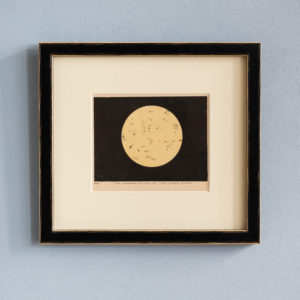
“The Beauty of the Heavens: A Pictorial Display of The Astronomical Phenomena of The Universe” by Charles Blunt, ‘The Nomenclature of the Lunar Spots’,
£295 each“The Beauty of the Heavens: A Pictorial Display of The Astronomical Phenomena of The Universe” by Charles Blunt, ‘The Nomenclature of the Lunar Spots’,
In the mid-19th century, Home Education had become very popular for the masses and lecturer, Charles Blunt seeing a gap in the market came up with these illustrations. Blunt who specialised in astronomy and natural philosophy, saw the need for a series of ‘accurate yet popular’ plates illustrating the known Universe. These hand-finished aquatints prints were based on Blunt’s own drawings, depicting celestial and astrological subjects.£295 each -
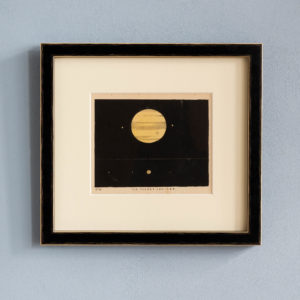
“The Beauty of the Heavens: A Pictorial Display of The Astronomical Phenomena of The Universe” by Charles Blunt, ‘The Planet Jupiter’,
£295 each“The Beauty of the Heavens: A Pictorial Display of The Astronomical Phenomena of The Universe” by Charles Blunt, ‘The Planet Jupiter’,
In the mid-19th century, Home Education had become very popular for the masses and lecturer, Charles Blunt seeing a gap in the market came up with these illustrations. Blunt who specialised in astronomy and natural philosophy, saw the need for a series of ‘accurate yet popular’ plates illustrating the known Universe. These hand-finished aquatints prints were based on Blunt’s own drawings, depicting celestial and astrological subjects.£295 each -
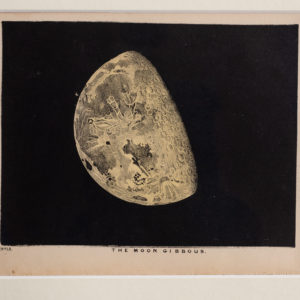
“The Beauty of the Heavens: A Pictorial Display of The Astronomical Phenomena of The Universe” by Charles Blunt, ‘The Moon Gibbous’,
£295 each“The Beauty of the Heavens: A Pictorial Display of The Astronomical Phenomena of The Universe” by Charles Blunt, ‘The Moon Gibbous’,
In the mid-19th century, Home Education had become very popular for the masses and lecturer, Charles Blunt seeing a gap in the market came up with these illustrations. Blunt who specialised in astronomy and natural philosophy, saw the need for a series of ‘accurate yet popular’ plates illustrating the known Universe. These hand-finished aquatints prints were based on Blunt’s own drawings, depicting celestial and astrological subjects.£295 each -
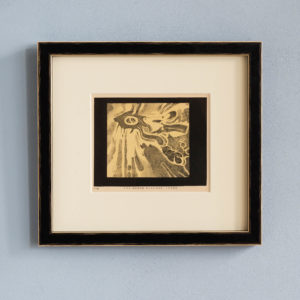
“The Beauty of the Heavens: A Pictorial Display of The Astronomical Phenomena of The Universe” by Charles Blunt, ‘The Moon’s Surface – Tycho’,
£295 each“The Beauty of the Heavens: A Pictorial Display of The Astronomical Phenomena of The Universe” by Charles Blunt, ‘The Moon’s Surface – Tycho’,
In the mid-19th century, Home Education had become very popular for the masses and lecturer, Charles Blunt seeing a gap in the market came up with these illustrations. Blunt who specialised in astronomy and natural philosophy, saw the need for a series of ‘accurate yet popular’ plates illustrating the known Universe. These hand-finished aquatints prints were based on Blunt’s own drawings, depicting celestial and astrological subjects.£295 each -
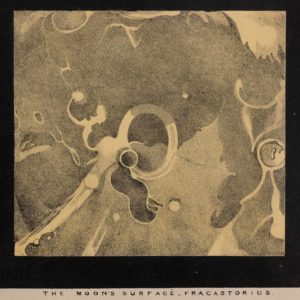
“The Beauty of the Heavens: A Pictorial Display of The Astronomical Phenomena of The Universe” by Charles Blunt, ‘The Moon’s Surface’,
£295 each“The Beauty of the Heavens: A Pictorial Display of The Astronomical Phenomena of The Universe” by Charles Blunt, ‘The Moon’s Surface’,
In the mid-19th century, Home Education had become very popular for the masses and lecturer, Charles Blunt seeing a gap in the market came up with these illustrations. Blunt who specialised in astronomy and natural philosophy, saw the need for a series of ‘accurate yet popular’ plates illustrating the known Universe. These hand-finished aquatints prints were based on Blunt’s own drawings, depicting celestial and astrological subjects.£295 each -
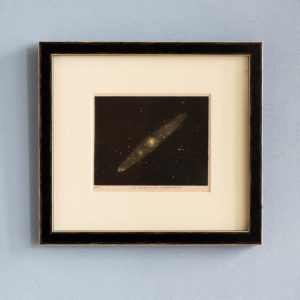
“The Beauty of the Heavens: A Pictorial Display of The Astronomical Phenomena of The Universe” by Charles Blunt, ‘The Nebula of Andromeda’,
£295 each“The Beauty of the Heavens: A Pictorial Display of The Astronomical Phenomena of The Universe” by Charles Blunt, ‘The Nebula of Andromeda’,
In the mid-19th century, Home Education had become very popular for the masses and lecturer, Charles Blunt seeing a gap in the market came up with these illustrations. Blunt who specialised in astronomy and natural philosophy, saw the need for a series of ‘accurate yet popular’ plates illustrating the known Universe. These hand-finished aquatints prints were based on Blunt’s own drawings, depicting celestial and astrological subjects.£295 each -
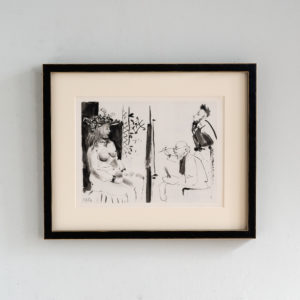
Picasso, Verve 1954
£295Picasso, Verve 1954
Original héliogravure print from Verve Vol. VIII, No 29/30 printed by the Master Printers Draeger Frères in 1954. Framed in black with a cream mount.£295 -
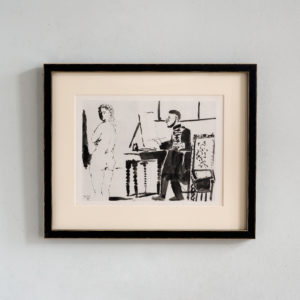
Picasso, Verve 1954
£295Picasso, Verve 1954
Original héliogravure print from Verve Vol. VIII, No 29/30 printed by the Master Printers Draeger Frères in 1954. Framed in black with a cream mount.£295 -
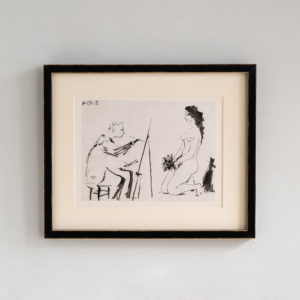
Picasso, Verve 1954
£295Picasso, Verve 1954
Original héliogravure print from Verve Vol. VIII, No 29/30 printed by the Master Printers Draeger Frères in 1954. Framed in black with a cream mount.£295 -
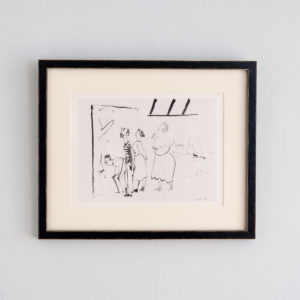
Picasso, Verve 1954
£295Picasso, Verve 1954
Original héliogravure print from Verve Vol. VIII, No 29/30 printed by the Master Printers Draeger Frères in 1954. Framed in black with a cream mount.£295 -
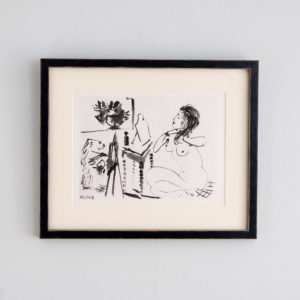
Picasso, Verve 1954
£295Picasso, Verve 1954
Original héliogravure print from Verve Vol. VIII, No 29/30 printed by the Master Printers Draeger Frères in 1954. Framed in black with a cream mount.£295 -
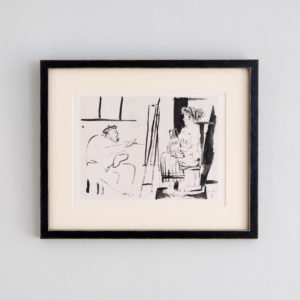
Picasso, Verve 1954
£295Picasso, Verve 1954
Original héliogravure print from Verve Vol. VIII, No 29/30 printed by the Master Printers Draeger Frères in 1954. Framed in black with a cream mount.£295 -
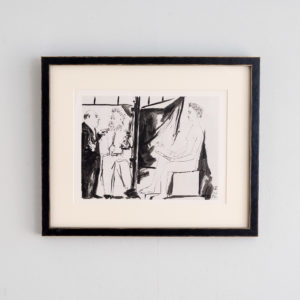
Picasso, Verve 1954
£295Picasso, Verve 1954
Original héliogravure print from Verve Vol. VIII, No 29/30 printed by the Master Printers Draeger Frères in 1954. Framed in black with a cream mount.£295 -
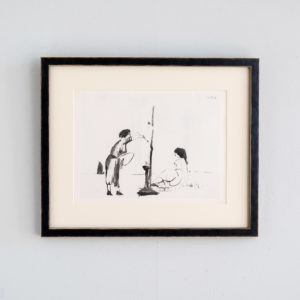
Picasso, Verve 1954
£295Picasso, Verve 1954
Original heliograuvre print from Verve Vol. VIII, No 29/30 printed by the Master Printers Draeger Frères in 1954. Framed in black with a cream mount.£295 -
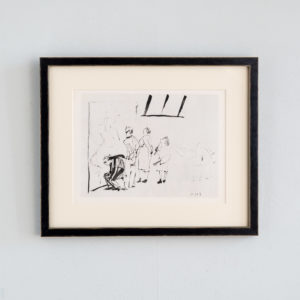
Picasso, Verve 1954
£295Picasso, Verve 1954
Original héliogravure print from Verve Vol. VIII, No 29/30 printed by the Master Printers Draeger Frères in 1954. Framed in black with a cream mount.£295 -
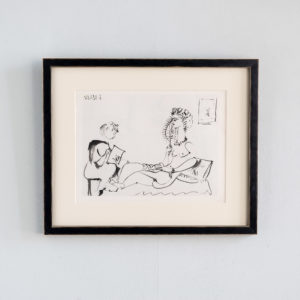
Picasso, Verve 1954
£295Picasso, Verve 1954
Original héliogravure print from Verve Vol. VIII, No 29/30 printed by the Master Printers Draeger Frères in 1954. Framed in black with a cream mount.£295 -
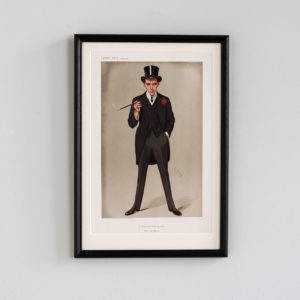
A Successful First Speech,
£270A Successful First Speech,
Framed chromolithograph by SPY (Sir Leslie Ward) picturing Mr Fredrick Edwin Smith, later 1st Earl of Birkenhead, MP for Liverpool Walton and boon companion of Sir Winston Churchill until his early death. The subtitle, 'Moab is my Washpot', is from psalm 108 and is a proverbial declaration of total triumph over vanquished foes. F.E Smith is famed in Parliamentary history for his maiden speech in the House, known as 'I Warn The Government', described by the late Paul Johnson as "without question the most famous maiden speech in history, quite unprecedented, and never equalled since." In it he accused the Liberal government of arrogance, dishonesty and heavy handedness after their landslide victory at the election of 1906. He managed to catch David Lloyd George in a clear untruth and won the begrudging admiration of all sides of the house. He declared, in response to a suggestion by Lloyd George to the churches of Wales that the Tories wanted to 'introduce slavery to the hills of Wales' that: "I have no means of judging how heaven will deal with persons who think it decent to make such suggestions. The distinction drawn by the Right Hon. Gentleman is more worthy of the county court than of the Treasury Bench." He then went on famously to declare: "I venture to warn the government that the people of this country will neither forget nor forgive a party which, in the heyday of its triumph, denies to the infant Parliament of the Empire one jot or tittle of that ancient liberty of speech which our predecessors in this House vindicated for themselves at the point of the sword." He was a, according to the ONDB a 'champion of hard-drinking patriotic men' in the face of the temperance movement before his early death of cirrhosis of the liver.£270 -
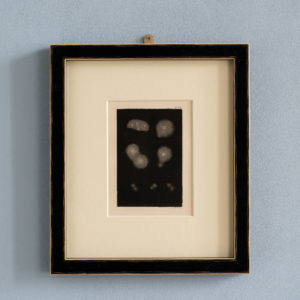
Views of the Architecture of the Heavens, by John Nichol
£250 eachViews of the Architecture of the Heavens, by John Nichol
John Pringle Nichol who, a Scottish Romantic astronomer, educator, and social reformer, who produced popular science books between 1846 and 1850. As the 5th Regius Professor of Astronomy at the University of Edinburgh , influenced the building of a large observatory beyond the city on Horselethill, paid for by the local citizens. In 1841, it was saved from financial collapse by the University. Part of the difficulties had arisen through Nichol's extravagance in purchasing unnecessarily expensive equipment. Eventually, Horselethill Observatory was kept in operation for 100 years. Nichol was a prolific writer and populariser of Astronomy; his books Contemplations on the Solar System and Views of the Architecture of the Heavens, the latter expanding on the Nebular Hypothesis, and one describing the discovery of Neptune£250 each -
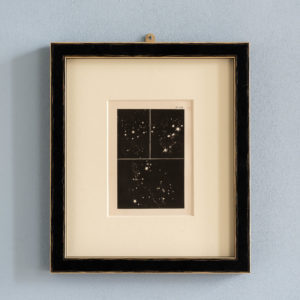
Views of the Architecture of the Heavens, by John Nichol
£250 eachViews of the Architecture of the Heavens, by John Nichol
John Pringle Nichol who, a Scottish Romantic astronomer, educator, and social reformer, who produced popular science books between 1846 and 1850. As the 5th Regius Professor of Astronomy at the University of Edinburgh , influenced the building of a large observatory beyond the city on Horselethill, paid for by the local citizens. In 1841, it was saved from financial collapse by the University. Part of the difficulties had arisen through Nichol's extravagance in purchasing unnecessarily expensive equipment. Eventually, Horselethill Observatory was kept in operation for 100 years. Nichol was a prolific writer and populariser of Astronomy; his books Contemplations on the Solar System and Views of the Architecture of the Heavens, the latter expanding on the Nebular Hypothesis, and one describing the discovery of Neptune£250 each -
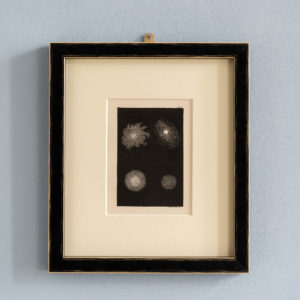
Views of the Architecture of the Heavens, by John Nichol
£250 eachViews of the Architecture of the Heavens, by John Nichol
John Pringle Nichol who, a Scottish Romantic astronomer, educator, and social reformer, who produced popular science books between 1846 and 1850. As the 5th Regius Professor of Astronomy at the University of Edinburgh , influenced the building of a large observatory beyond the city on Horselethill, paid for by the local citizens. In 1841, it was saved from financial collapse by the University. Part of the difficulties had arisen through Nichol's extravagance in purchasing unnecessarily expensive equipment. Eventually, Horselethill Observatory was kept in operation for 100 years. Nichol was a prolific writer and populariser of Astronomy; his books Contemplations on the Solar System and Views of the Architecture of the Heavens, the latter expanding on the Nebular Hypothesis, and one describing the discovery of Neptune£250 each -
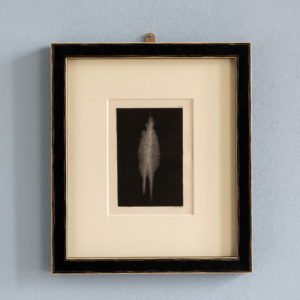
Views of the Architecture of the Heavens, by John Nichol
£250 eachViews of the Architecture of the Heavens, by John Nichol
John Pringle Nichol who, a Scottish Romantic astronomer, educator, and social reformer, who produced popular science books between 1846 and 1850. As the 5th Regius Professor of Astronomy at the University of Edinburgh , influenced the building of a large observatory beyond the city on Horselethill, paid for by the local citizens. In 1841, it was saved from financial collapse by the University. Part of the difficulties had arisen through Nichol's extravagance in purchasing unnecessarily expensive equipment. Eventually, Horselethill Observatory was kept in operation for 100 years. Nichol was a prolific writer and populariser of Astronomy; his books Contemplations on the Solar System and Views of the Architecture of the Heavens, the latter expanding on the Nebular Hypothesis, and one describing the discovery of Neptune£250 each -
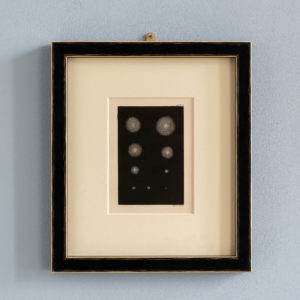
Views of the Architecture of the Heavens, by John Nichol
£250 eachViews of the Architecture of the Heavens, by John Nichol
John Pringle Nichol who, a Scottish Romantic astronomer, educator, and social reformer, who produced popular science books between 1846 and 1850. As the 5th Regius Professor of Astronomy at the University of Edinburgh , influenced the building of a large observatory beyond the city on Horselethill, paid for by the local citizens. In 1841, it was saved from financial collapse by the University. Part of the difficulties had arisen through Nichol's extravagance in purchasing unnecessarily expensive equipment. Eventually, Horselethill Observatory was kept in operation for 100 years. Nichol was a prolific writer and populariser of Astronomy; his books Contemplations on the Solar System and Views of the Architecture of the Heavens, the latter expanding on the Nebular Hypothesis, and one describing the discovery of Neptune£250 each -
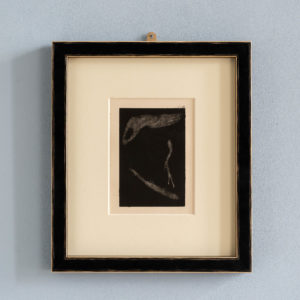
Views of the Architecture of the Heavens, by John Nichol
£250 eachViews of the Architecture of the Heavens, by John Nichol
John Pringle Nichol who, a Scottish Romantic astronomer, educator, and social reformer, who produced popular science books between 1846 and 1850. As the 5th Regius Professor of Astronomy at the University of Edinburgh , influenced the building of a large observatory beyond the city on Horselethill, paid for by the local citizens. In 1841, it was saved from financial collapse by the University. Part of the difficulties had arisen through Nichol's extravagance in purchasing unnecessarily expensive equipment. Eventually, Horselethill Observatory was kept in operation for 100 years. Nichol was a prolific writer and populariser of Astronomy; his books Contemplations on the Solar System and Views of the Architecture of the Heavens, the latter expanding on the Nebular Hypothesis, and one describing the discovery of Neptune£250 each -
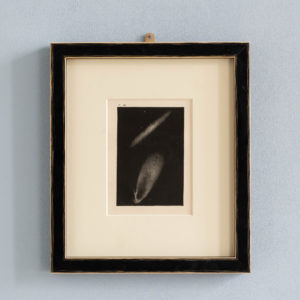
Views of the Architecture of the Heavens, by John Nichol
£250 eachViews of the Architecture of the Heavens, by John Nichol
John Pringle Nichol who, a Scottish Romantic astronomer, educator, and social reformer, who produced popular science books between 1846 and 1850. As the 5th Regius Professor of Astronomy at the University of Edinburgh , influenced the building of a large observatory beyond the city on Horselethill, paid for by the local citizens. In 1841, it was saved from financial collapse by the University. Part of the difficulties had arisen through Nichol's extravagance in purchasing unnecessarily expensive equipment. Eventually, Horselethill Observatory was kept in operation for 100 years. Nichol was a prolific writer and populariser of Astronomy; his books Contemplations on the Solar System and Views of the Architecture of the Heavens, the latter expanding on the Nebular Hypothesis, and one describing the discovery of Neptune£250 each
Featured Items
-

Portrait by Andre Derain, Verve Vol 2 / No. 5-6.
£800Portrait by Andre Derain, Verve Vol 2 / No. 5-6.
The Verve Review was a purposefully luxurious. It ran from 1937 to 1960, but with only 38 editions available, due to the high degree of design and editorial work dedicated to each issue. Each edition contained unique lithographic prints, commissioned by the editor, and each cover a double-page lithograph elaborated by one of the artists contained within. It was the brainchild of its editor Stratis Eleftheriades, a Greek National who moved to Paris in the early thirties to take part in the growing Modernist movement, writing under the name of Teriade.£800 -
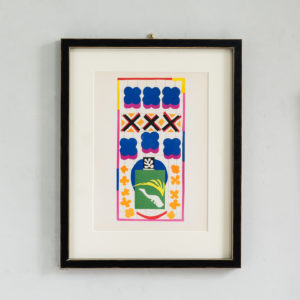
Henri Matisse, ‘The Last Works of Henri Matisse’
£900 eachHenri Matisse, ‘The Last Works of Henri Matisse’
From Verve Vol. IX No. 35/36 published by Tériade under the title 'The Last Works of Henri Matisse'£900 each -

Portraits Part I by Constantin Guys, Verve Vol 2 / No. 5-6.
£500Portraits Part I by Constantin Guys, Verve Vol 2 / No. 5-6.
The Verve Review was a purposefully luxurious. It ran from 1937 to 1960, but with only 38 editions available, due to the high degree of design and editorial work dedicated to each issue. Each edition contained unique lithographic prints, commissioned by the editor, and each cover a double-page lithograph elaborated by one of the artists contained within. It was the brainchild of its editor Stratis Eleftheriades, a Greek National who moved to Paris in the early thirties to take part in the growing Modernist movement, writing under the name of Teriade.£500 -

Portrait Fragment by Pierre Bonnard, Verve Vol 2 / No. 5-6.
£600Portrait Fragment by Pierre Bonnard, Verve Vol 2 / No. 5-6.
The Verve Review was a purposefully luxurious. It ran from 1937 to 1960, but with only 38 editions available, due to the high degree of design and editorial work dedicated to each issue. Each edition contained unique lithographic prints, commissioned by the editor, and each cover a double-page lithograph elaborated by one of the artists contained within. It was the brainchild of its editor Stratis Eleftheriades, a Greek National who moved to Paris in the early thirties to take part in the growing Modernist movement, writing under the name of Teriade.£600
